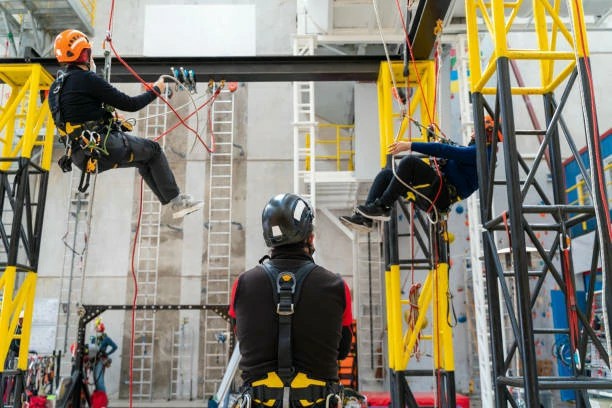


 349,500 Offered Certificates
349,500 Offered Certificates
 24/7 Online Training
24/7 Online Training
 Money Back Guarantee
Money Back Guarantee
 Fully Accredited Courses
Fully Accredited Courses

Created at: 22-02-2025 15:24
Working at heights presents some of the most significant safety risks in the workplace. From construction sites to warehouses, the potential for serious accidents is ever-present. Understanding these dangers and implementing effective training is crucial for preventing injuries. This post will explore the key risks associated with working at height, the importance of proper training, and share real-life examples illustrating how safety training saves lives.
The following are the most prevalent hazards faced by workers who perform tasks at elevated levels:
Proper training is the foundation of any safety program. When it comes to working at heights, effective training provides the following benefits:
Fall protection systems are critical to safeguarding workers at heights. These systems can include:
Your organization should always have an emergency response plan in place specific to working at heights. Key elements include:
Here we present two compelling case studies demonstrating the efficacy of proper training and planning:
On a construction site in Dublin, a worker fell from scaffolding due to a momentary lapse in focus. However, thanks to prior Working at Heights Training, his colleagues quickly initiated the rescue plan, using proper communication and safety equipment to stabilize him before paramedics arrived. The worker sustained minor injuries and made a full recovery.
In Galway, a maintenance team was working on a rooftop when a sudden gust of wind threatened to push a worker over the edge. The team had completed a Working at Heights Safety Course, which included how to secure all equipment against adverse weather conditions. Their quick thinking and preparedness prevented what could have been a fatal accident.
Working at heights carries inherent risks, but with proper training and safeguards in place, these risks can be significantly reduced. Organizations must prioritize Working at Heights Training to ensure the safety of their workers. By investing in safety courses, companies not only protect their employees but also save on potential costs associated with accidents, injuries, and downtime.
If you’re interested in enhancing workplace safety and reducing fall risks, consider enrolling in our Working at Heights Safety Course today. For more information, reach out at [email protected].